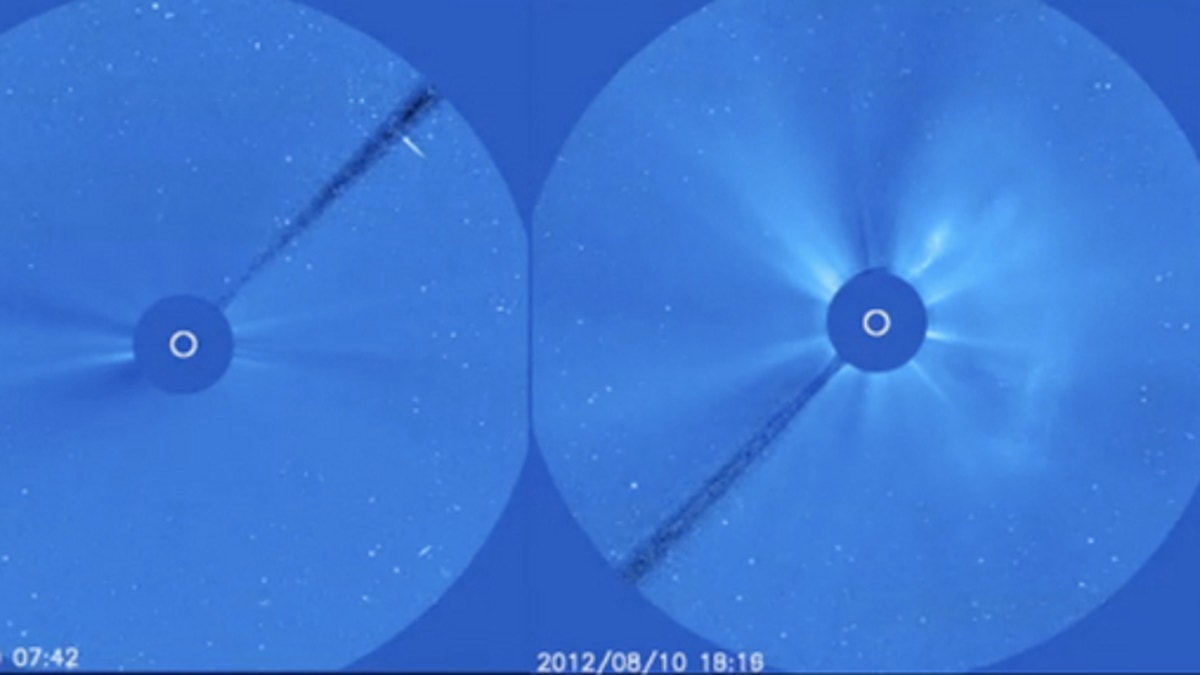
This screenshot from a video taken by the NASA/ESA SOHO spacecraft shows how much more active the sun is in August 2012 (right) than it was three years ago (left). (NASA/ESA/SOHO)
A new video from a sun-watching spacecraft shows just how much our star has woken up in the last three years.
The video gives a side-by-side comparison of footage shot exactly three years apart by the Solar and Heliospheric Observatory (SOHO), a joint NASA-European Space Agency probe.
On the left is the quescient sun of Aug. 4-10, 2009. On the right: the raging star of a few weeks ago, which blasts out big flares and coronal mass ejections (CMEs) — huge eruptions of solar plasma — with startling frequency.
Solar activity waxes and wanes on an 11-year cycle. Back in 2009, the sun was at a low ebb of the current Solar Cycle 24. But our star is now ramping up toward a predicted activity peak in 2013, experts say.
Researchers are keeping a close eye on the sun with spacecraft such as SOHO and NASA's Solar Dynamics Observatory, for solar outbursts have the potential to wreak havoc here on Earth. A big CME that slams squarely into our planet, for example, can spawn geomagnetic storms that temporarily disrupt GPS signals, radio communications and power grids.
Such effects can be amplified by the Van Allen radiation belts, two doughnut-shaped regions around Earth where our planet's magnetic field has trapped trillions of charged particles from the sun. Researchers don't understand exactly how the belts respond to increased solar activity, but they should get a much better idea soon.
NASA's $686 million Radiation Belt Storm Probes mission will send two heavily armored spacecraft into the Van Allen belts on a two-year quest to map out how the dynamic belts ebb and flow over time. RBSP was supposed to launch Thursday (Aug. 23), but two separate glitches have now pushed liftoff back to Saturday morning (Aug. 25).
The venerable SOHO spacecraft launched in December 1995 and has been observing the sun with 12 different science instruments ever since. SOHO sits about 930,000 miles (1.5 million kilometers) from Earth near Lagrange Point 1, a gravitionally stable spot between our planet and the sun.
